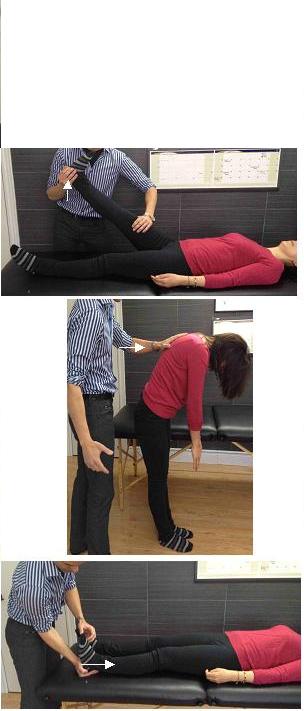Clinical Tests to Identify Patients with Lawyers!
Reference:Kumar N, et al Resistive straight leg raise test, resistive forward bend test and heel compression test: novel techniques in identifying secondary gain motives in low back pain cases. Eur Spine J. 2012 Nov;21(11):2280-6.
I am very hesitant about quoting this recent article claiming they have discovered a way of identifying patients with Secondary Gain Motives (SGM) from so called “real” patients.
Patients were assumed to have SGM if they were on workers comp, post-MVA or injured due to an assault… and with ongoing litigation issues.
Of the 200 patients with LBP, 100 were put into the “SGM group” and 100 were put in the “non-SGM group”.
The study found three clinically practical tests that strongly predicted SGM status in the patients with LBP.
Test #1: resistive Straight Leg Raise test (rSLR)
A +ve test is if a patient actively pushes their heel down into the PTs hand during the passive SLR test (usually at less than 45�)
Test #2: resistive Forward Bend test (rFBT)
A +ve test is if a patient actively pushes back into the PTs hand while gently guiding the forward bend.
Test #3: Heel Compression Test (HCT)
After suggesting that the test may or may not increase their LBP, in supine lying with the legs extended, the PT gradually pushes the patient’s heel cranially. A +ve test is back pain reproduction or exacerbation.
In predicting secondary gain status, rSLR had the highest specificity (0.94). Meaning if +ve, they were very likely to have a lawyer!
A +ve rSLR also strongly correlated with 3 or more positive Waddell’s non-organic signs.
Posted on: March 23, 2013
Categories: Lumbar Spine


